- Blepharitis
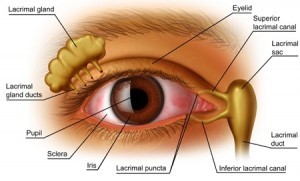
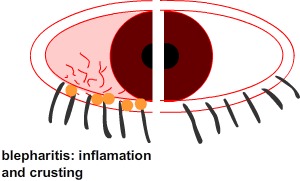
What is Blepharitis?
Blepharitis is a condition where the eye does not get enough moisturising oil and the eye becomes red and gritty. Many people do not realise that the eye requires both water and oil to keep comfortable. Without water (tears) they will become dry and sore, and without oil they will be gritty and water profusely.
Whilst water comes from tear glands located on the surface of the eye and behind the eye, oil comes from meibomian glands located on the eyelid margins. There are a number of ways the eyes can be deficient of oil. The oil glands can be blocked with scale and debris around the eye lashes, by thick oil secretions that block the glands, or by producing frothy ineffective oil secretions.
What are the symptoms?
What causes Blepharitis?
Frothy oil secretions on the lid margin.
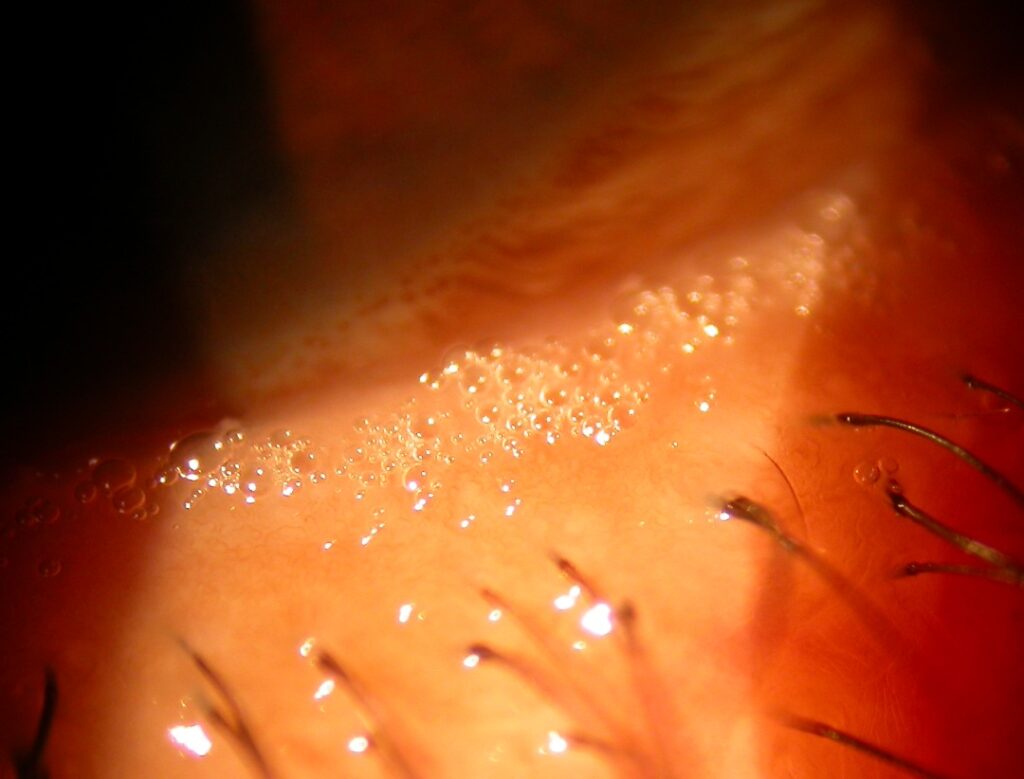
Crusting around the lashes
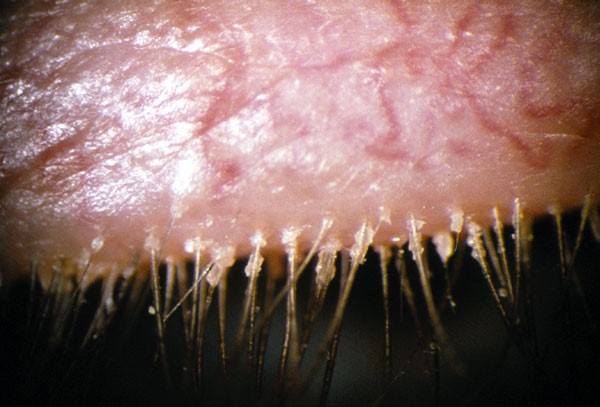
What is the treatment?
Depending on the type of blepharitis the treatment can vary. For immune mediated blepharitis, commoner in childhood and young adults, oral antibiotics may be the mainstay of treatment. For most age-related blepharitis the condition needs to be ‘managed’ rather than ‘cured’. The best way to manage blepharitis is to tackle the underlying cause of blepharitis, the blocked or dysfunctional oil glands, rather than treating the symptoms with eyedrops. When blepharitis is bad it may require twice daily treatments. As the condition improves these treatments may be less frequent.
There are a number of different treatment strategies. As is often the case, the quicker and simpler the treatment, the more likely people are to comply with it. The strategy I would recommend is to apply a warm flannel to the eye for 1 minute to soften the debris and the oil blocking the glands. Immediately afterwards stretch the lid and rub the lid margin / lashes firmly with a finger or flannel or cotton bud lubricated with warm tap water (contact lens wearers should use boiled cooled water and a cotton bud). You need to apply firm pressure in order to unblock pores and express the old oil, hence the term ‘lid scrubs’ or ‘lid margin massage’. Do this for top and bottom lid margins. Bath or shower time is often a good time to do this. It will take 3 weeks of daily lid scrubs to have a noticeable effect.
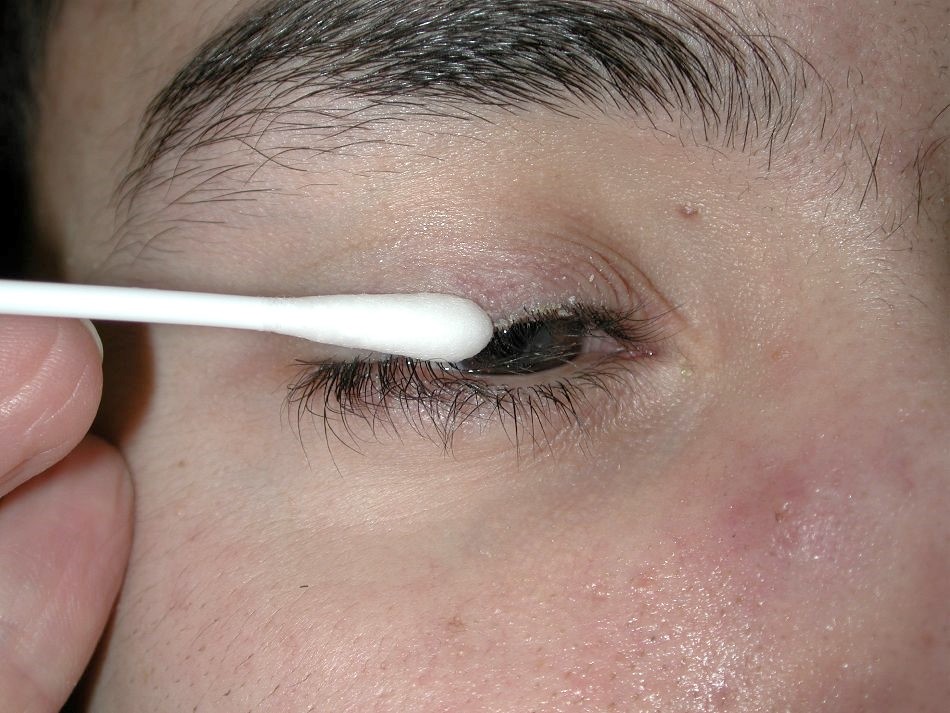
If you do not like the simple approach, then there are some commercially available wipes that you can buy over the counter, such as Lid Care Cleansing Wipes, and Blephaclean Pads. Alternatively some advocate a cup of boiled cooled water with a drop of baby shampoo, or a large pinch of bicarbonate of soda in the cup, with a cotton bud. These solutions are thought to help break down debris and dissolve the oil. Again, firm pressure is the key to success.
If blepharitis is immune mediated or bacterial then oral antibiotics may be required.
What if my eye is still sore?
If after regular treatment, your eye still has the symptoms of blepharitis, you may have a tear deficiency also. See your pharmacist, optometrist or doctor for some artificial tear drops. In contrast to natural tears that last only a few seconds, artificial tears coat the eye for longer periods of time and provide relief. This may reduce the gritty sensation and reduce the reflex watering of the eye. It is best to instil lubricant eye drops before you go into environments that may make your eyes worse, such as air-conditioned environments, hot weather, or windy dayss. It is far better to prevent your eyes becoming sore rather than trying to soothe them afterwards. Drops can be used 4-6 times per day.
Some good drops include Optive, Hylo-tear or Systane.
Can diet influence blepharitis?
Yes, there is some evidence that flaxseed oil or omega-3 fish oil supplements can improve the quality of oil the meibomian glands produce, and can reduce symptoms.
